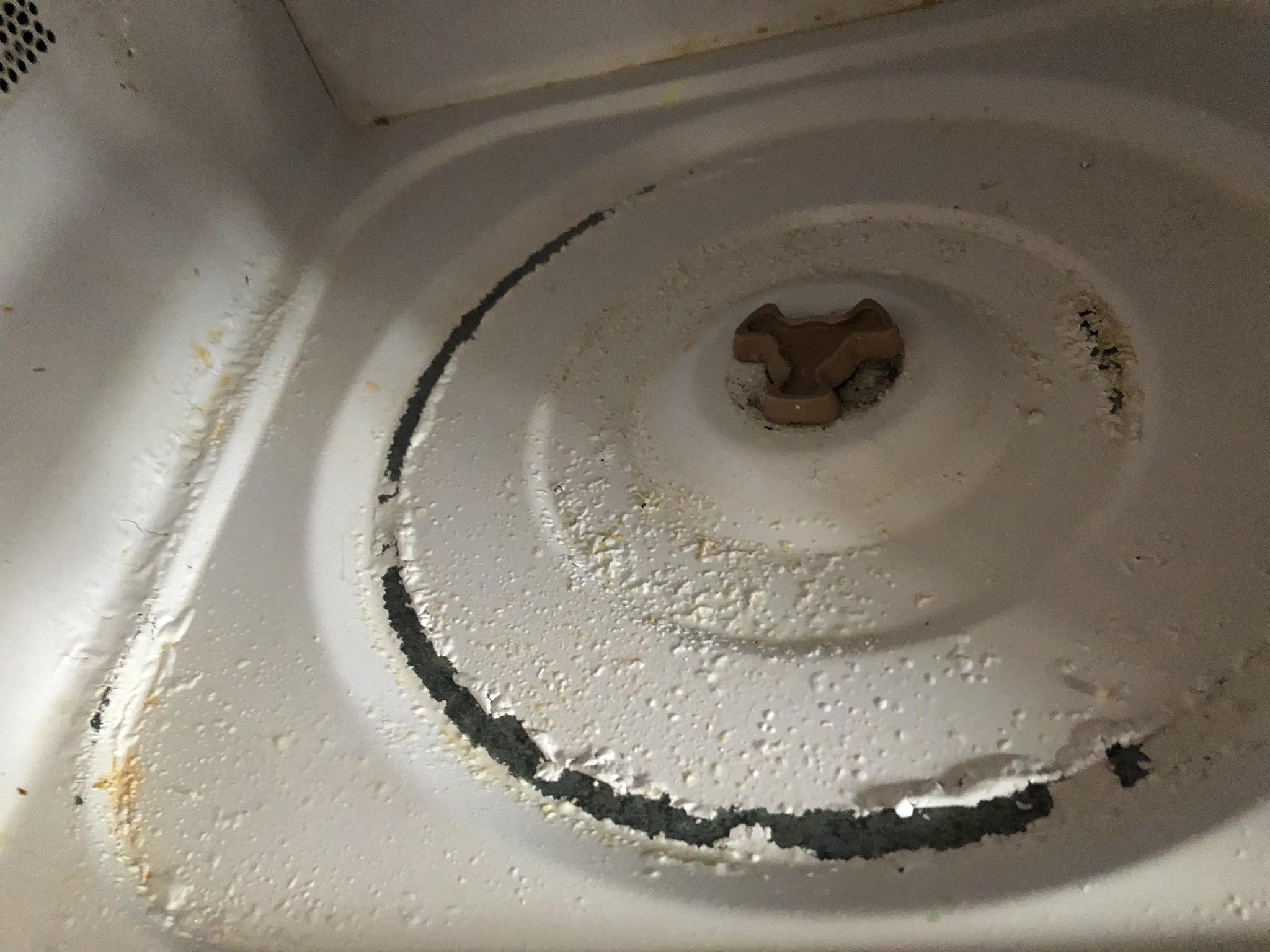I was up late one night, aimlessly scrolling through a homemaking group on social media, when I came across a photo that made me stop mid-scroll. Someone had posted a shot of the inside of their microwave, and honestly, it looked like it had barely survived a fire. The paint was peeling off in sheets, bubbling in spots like it had been scorched.

Her caption read something like, “This bubbling happens with every microwave I’ve owned. What am I doing wrong?” And I couldn’t help but laugh—because same here. I’ve had two microwaves break down in exactly the same way. But I’d never paused to question why. I figured it was just bad manufacturing or maybe I had some kind of microwave curse. Turns out, there’s a real reason, a mechanical one. The paint inside a microwave isn’t there just to look nice. It’s functional—it reflects the microwaves so food cooks evenly. When that coating starts to bubble or peel, it’s not random. It can happen for a number of reasons. The most common is steam.
When you heat something without a cover, especially food with high moisture content, that steam blasts the microwave’s walls and floor. Over time, the constant exposure to moisture and heat weakens the paint and causes bubbling. Then there’s the way we clean. If you’re scrubbing with steel wool or harsh pads, or using strong cleaners, you’re wearing down the enamel every time. I get it—spaghetti sauce explosions are frustrating—but aggressive cleaning does more harm than good. And if spills aren’t cleaned up quickly, especially acidic ones like tomato sauce or vinegar-based marinades, they slowly erode the enamel. Another issue I just learned about is the plastic wheel under the glass turntable. If it’s gunky or not rotating properly, the turntable can scrape the floor as it spins, wearing away the paint bit by bit until one day, half of it is gone. So, is it just an eyesore, or is it actually dangerous? Unfortunately, it can be more than a cosmetic issue. When the paint peels away and metal is exposed, microwaves bounce around unpredictably and cause arcing—those little sparks you sometimes see. This can shorten the appliance’s life or even cause a fire.
On top of that, exposed metal can rust. And if flakes of rust end up in your food, well, that’s just gross. If the peeling is minor and not sparking, it’s not an immediate hazard, but it’s still not ideal—like driving a car with a nail in the tire. It works, but it won’t last. So, how do you stop your microwave from turning into a flaky mess? Prevention isn’t glamorous, but it works. The simplest thing you can do is cover your food. Use a lid or even a paper towel to protect the interior from splatters and steam. Also, wipe down the inside regularly—ideally after every use. A quick swipe with a damp cloth goes a long way. Avoid abrasive cleaners and tools. No scouring pads, no bleach—stick to gentle options like diluted vinegar or baking soda paste. And don’t forget to check under the turntable every now and then.
Clean any buildup and make sure the wheel is spinning smoothly to avoid scraping the bottom. If your microwave’s paint is already peeling, you can fix it with microwave-safe, high-heat touch-up paint—definitely not just any white paint. To repair it, lightly sand the area to remove loose flakes, clean it well, let it dry, then apply the paint per the instructions and wait for it to fully cure before using the microwave again. But if the damage is extensive or there’s a lot of rust, it might be time to get a new one. A few extra tips: don’t microwave items that are too big for the turntable—it can cause uneven heating and damage. Never put metal or foil inside, especially if the microwave already has exposed metal. And once a week, take five minutes to steam-clean your microwave by zapping a bowl of water with lemon juice or vinegar. It loosens grime so you can wipe it away easily. Ultimately, peeling paint in your microwave isn’t just an ugly problem—it’s a warning sign. But it’s not inevitable. With a little care and attention, you can prevent it and extend your microwave’s life.





